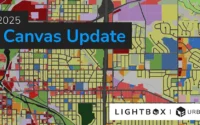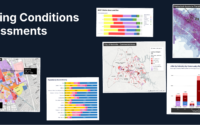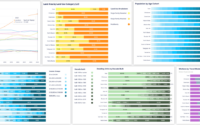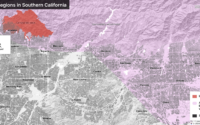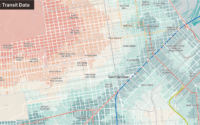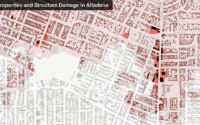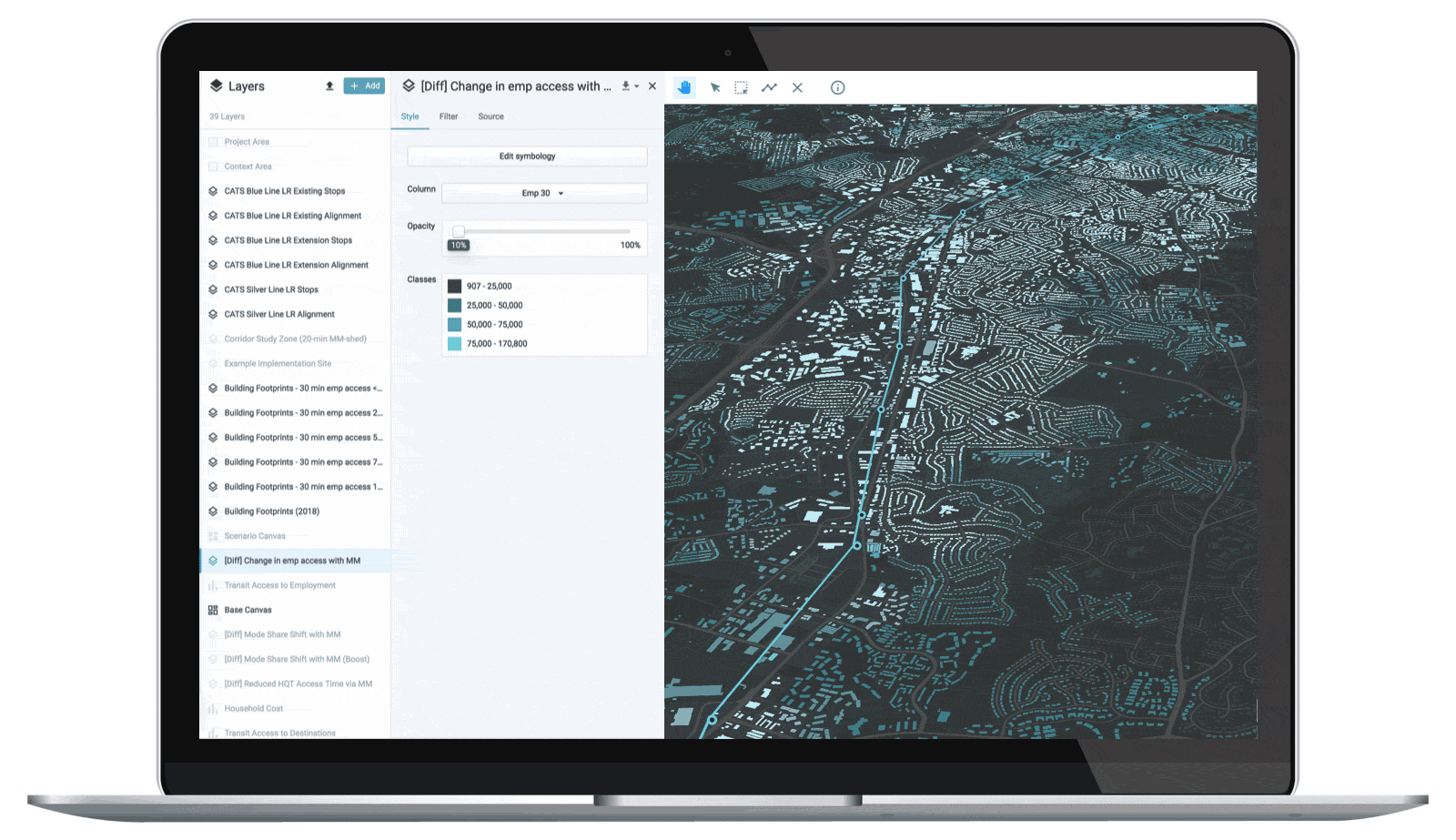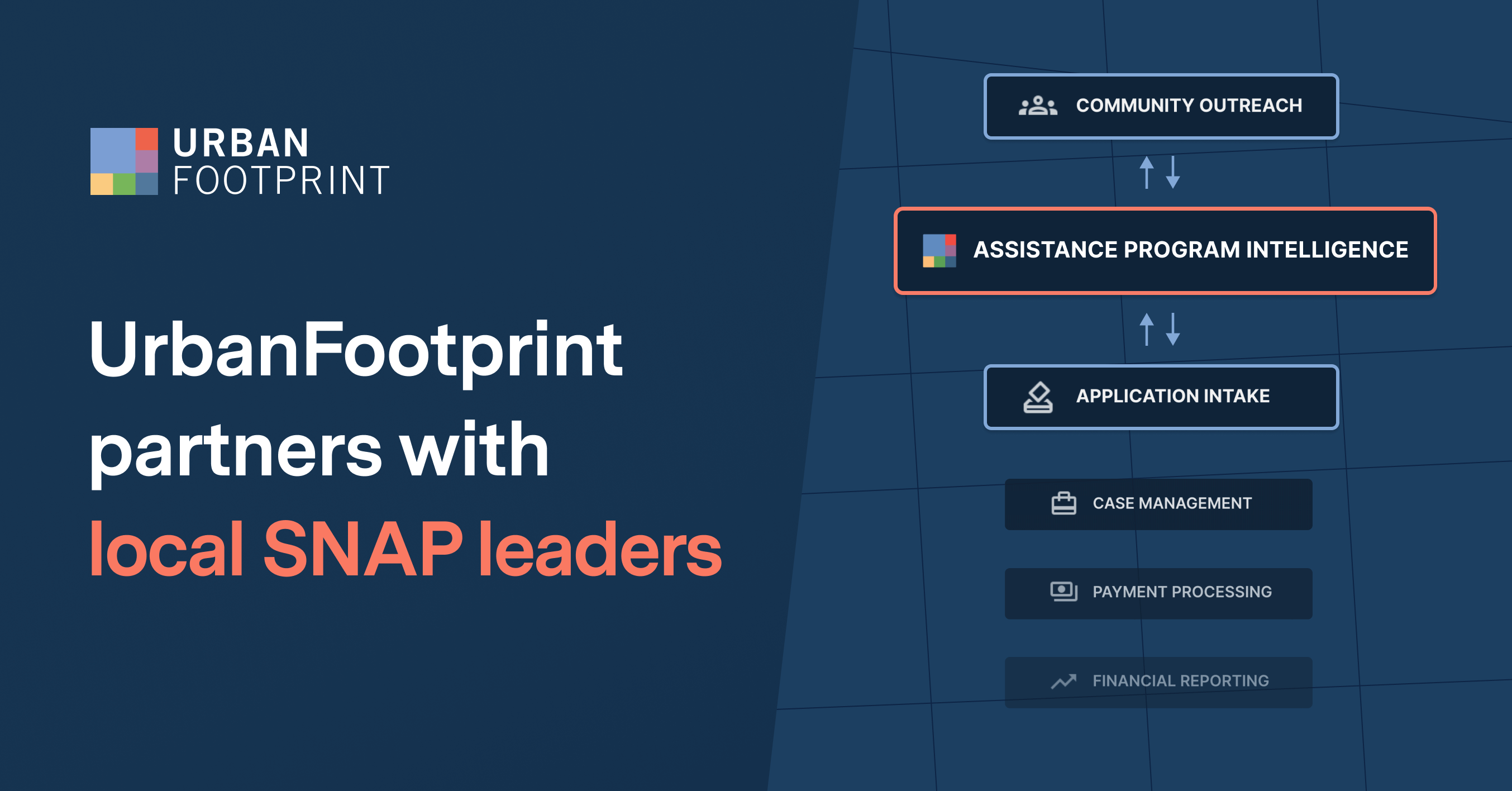
Since March 2020, the number of American households experiencing food insecurity has risen 45%. Despite billions of government dollars dedicated to eradicating hunger, families continue to go hungry everyday. Children in single family households and in minority communities are particularly at risk, as are veterans.
There is no single factor to explain the sharp rise in food insecurity across the United States, which makes responding to the hunger crisis much more challenging. Community partners and relief programs, such as SNAP, must respond quickly, equitably and efficiently.
Tasks like locating eligible households, identifying other outreach partners and monitoring program enrollment are critical to successful outreach and program performance. Unfortunately, much of the data needed to provide these insights is inaccurate or incomplete, which can lead to uninformed targeting strategies, gaps in program enrollment or inaccurate reporting.
UrbanFootprint recognizes that gaps in data are barriers to making effective decisions and delivering targeted services—barriers that can ultimately hinder the success of programs like SNAP.
To help agencies and community partners overcome these barriers, UrbanFootprint developed and launched its Assistance Program Intelligence solution, providing clear answers to complex questions.
For the first time, stakeholders can access consolidated data and mission-critical insights on issues like food insecurity, and eviction and foreclosure risk, and start leveraging the data to improve outreach targeting, address service and equity gaps, and make holistic program improvements.
Improving Food Insecurity Data for SNAP Teams
Agencies and community partners now have access to data insights that can ultimately help their SNAP programs run more effectively. UrbanFootprint makes using data simple, empowering agencies to use their data more effectively.
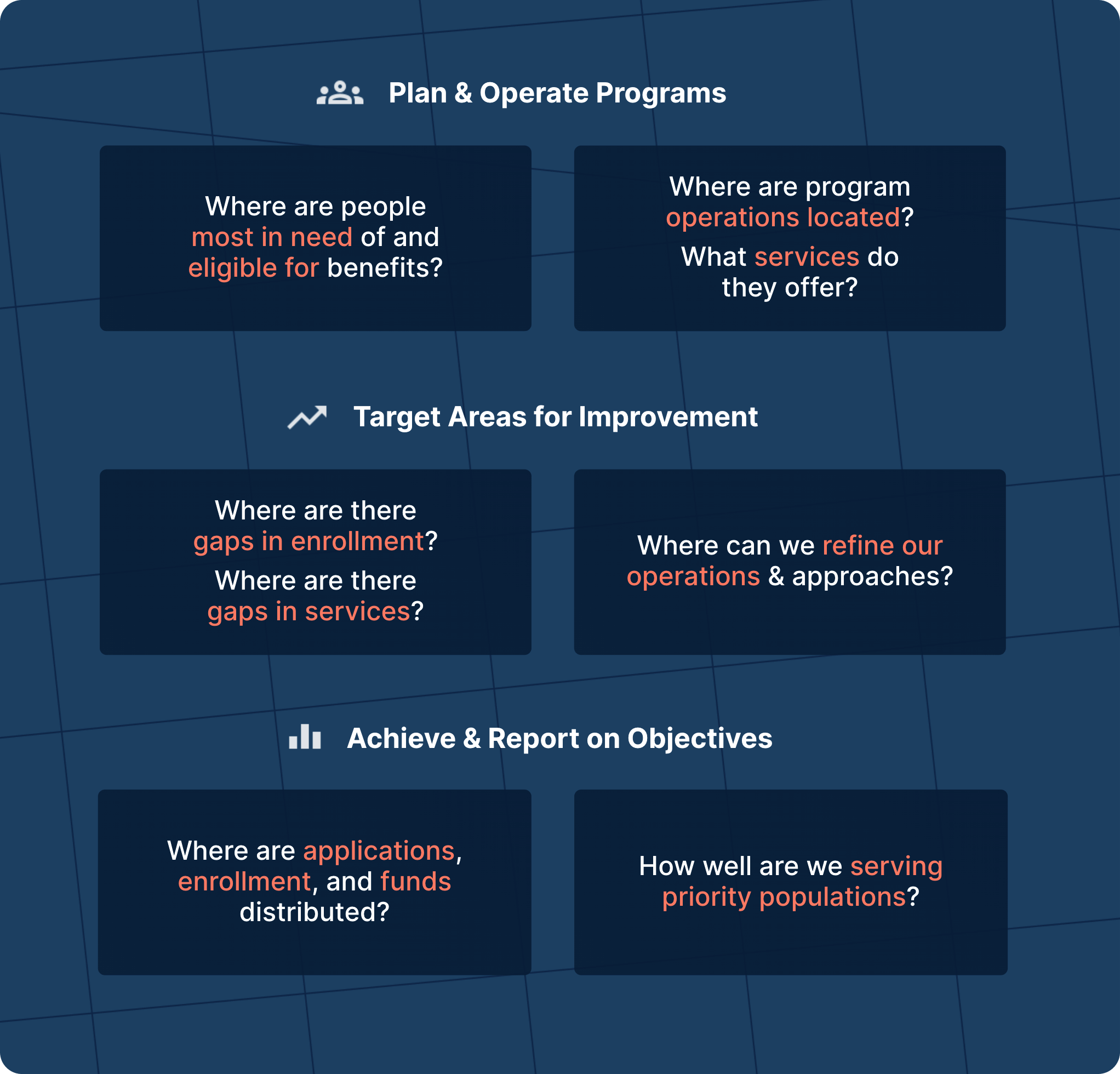
For the first time, agencies and community partners responding to the hunger crisis now have access to the same actionable data sets, allowing them to:
- Map and measure SNAP program need and eligibility
- Identify and close gaps in SNAP enrollment and service quality
- Target priority populations (e.g. seniors, veterans, underserved races, immigrant communities)
- Track and report on overall SNAP program progress
- Refine SNAP program operations
UrbanFootprint’s Assistance Program Intelligence solution provides SNAP programs with mission-critical information to assist those who need it most.
Agencies and community partners using UrbanFootprint have access to powerful insights like never before.
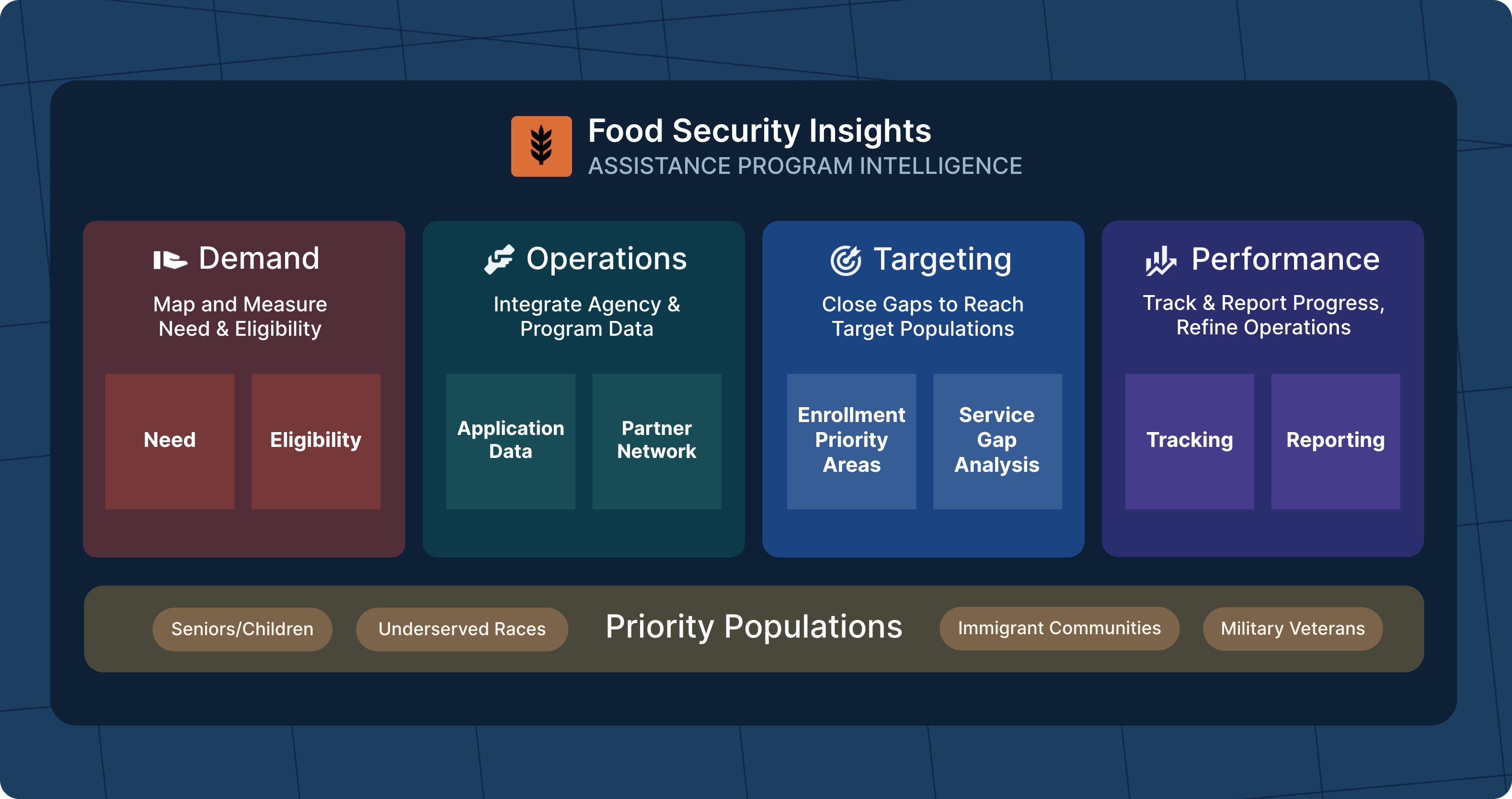
Map and measure SNAP program need and eligibility
UrbanFootprint’s easy-to-use platform includes interactive maps and dashboards to help agencies identify priority populations quickly and accurately. Community partners and agencies can easily assess and identify outreach priority areas based on income-based eligibility, Federal priority populations, or areas of high food insecurity or insufficiency.
Stakeholders can also identify barriers to SNAP enrollment in certain populations and households. Barriers such as lack of internet access, transportation, or language translation can be identified quickly, giving valuable context to help outreach partners target those who can’t otherwise be reached by traditional methods.
Identify and close gaps in SNAP enrollment and service quality
UrbanFootprint enables stakeholders to close the gap between enrollment applications and unmet needs by providing enrollment data and service-coverage maps. Community providers can then assess coverage and enrollment progress among priority populations or in certain geographical locations to help pinpoint gaps in outreach efforts. Understanding where existing and potential partner networks and activities are located can help with resource distribution and relief logistics.
Traditional outreach methods cannot map and measure program enrollment to this level of precision, let alone determine gaps in outreach efforts to priority populations. Because the data sources are not regularly updated and contain siloed information, service providers using those methods are only able to look backward on past performance instead of using data to plan forward-looking action.
Using UrbanFootprint, agencies and community partners are better able to develop a forward thinking approach to assist underserved and vulnerable populations more equitably.
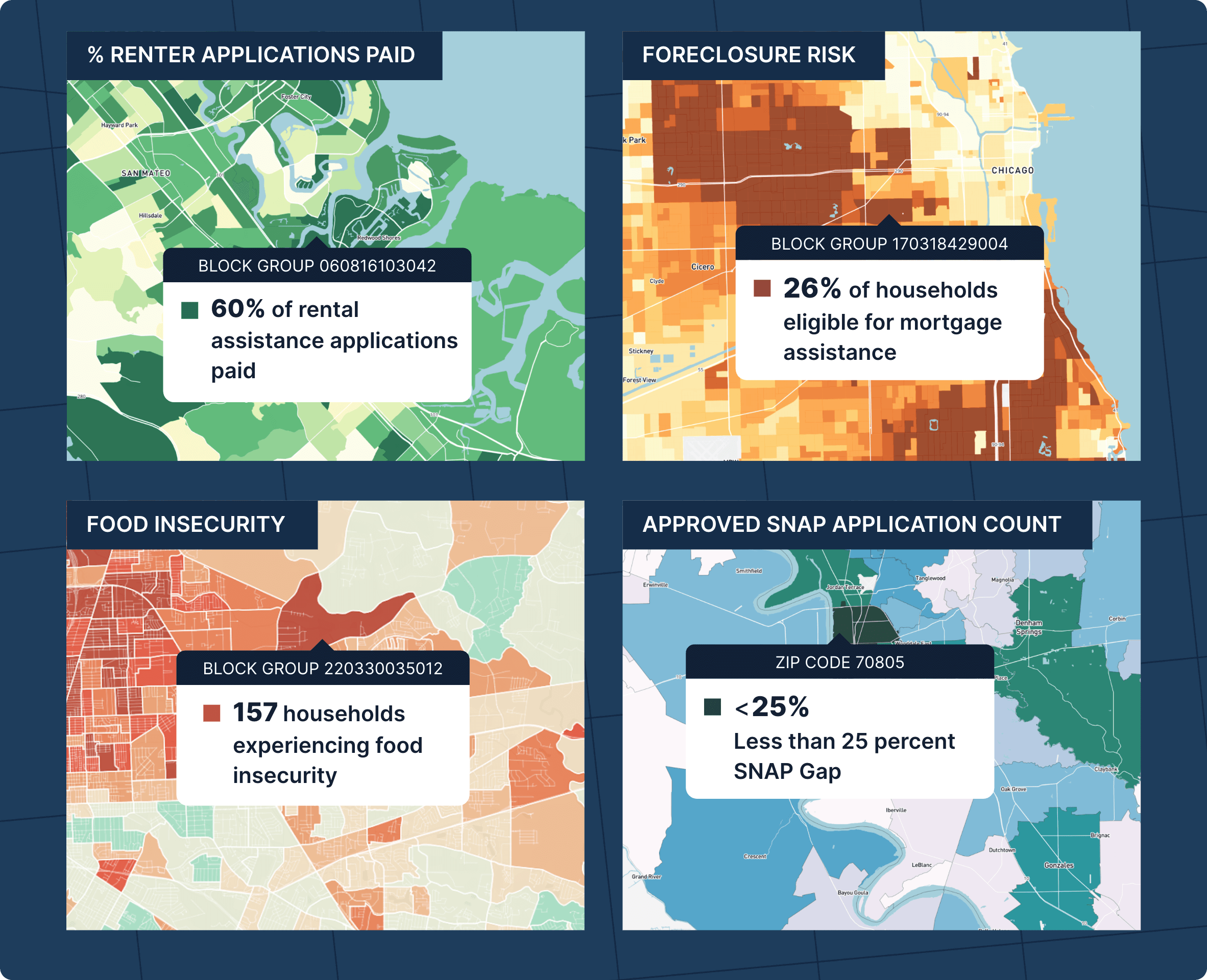
Target priority populations
UrbanFootprint provides granular, context-rich data, allowing providers to tailor program activities to the specific needs of a certain population. Agencies and community partners are able to assess barriers and other socio-economic factors impacting outreach and assistance efforts to better understand program effectiveness. Armed with such detailed information, community partners can contact individual households directly.
Having the ability to contextualize vulnerability alongside eligibility and enrollment can lead to better decisions and ultimately better outcomes. With a more comprehensive understanding of a community’s need and individual household eligibility and enrollment progress, agencies and community providers using UrbanFootprint are able to quantify progress, resulting in better, more accurate reporting.
Track and report on SNAP program progress and refine operations
With better data, stakeholders and agencies can more accurately track program performance and write reports that more clearly reflect reality. Often, reports do not tell the whole story due to gaps in data collection and inaccessible data kept in silos. Minimal reporting can lead to a host of issues, such as not realizing the full scope of a problem, using funds inefficiently, overlapping services, and receiving less funding.
Once data is consolidated, simplified and usable, program administrators can track program progress seamlessly and knowledgeably make decisions to improve operations. Using data more efficiently is a goal for many organizations, especially during times of crisis or special events. UrbanFootprint makes it easy for organizations of all sizes to access and use data quickly without a steep learning curve.
State of Louisiana uses UrbanFootprint to help target relief operations and expedite recovery
There are currently over 19.5 million households without consistent access to food, and that number continues to rise, particularly in the South.
Since the start of the pandemic, Louisiana has experienced a 44% increase in food insecurity, making it one of the hardest-hit states in the hunger crisis. To assist with the frontline response, UrbanFootprint partnered with the Center for Planning Excellence, a non-profit organization driving regional planning efforts in Louisiana, to identify and measure vulnerabilities leading to food insecurity and insufficiency throughout the state. The goal was to provide measurable, actionable data to inform decision makers and develop targeted relief strategies in areas of greatest need—quickly.
The insights provided by UrbanFootprint resulted in a database of actionable information that tracked the scale and distribution of the evolving food crisis. The context-rich data identifies communities with the greatest need and lowest enrollment in programs like SNAP, and even allows providers to develop intervention scenarios before deploying actual resources.
“Deploying data and information that provides a nuanced, place-based understanding of how our built environment is serving our residents is essential to expediting recovery, aligning resources with the most effective interventions, tracking impacts, and building the resilience our state needs to thrive in the future.”
– Camille Manning-Broome, President & CEO of CPEX
Having access to tailored, place-based data provides leaders across the state with a deep understanding of how to best serve residents. The indices collected by UrbanFootprint serve as the backbone of a statewide Food Security Index available to all agencies, cities and food relief organizations across the state. When all partners and agencies have access to the same datasets and insights, relief strategies become more efficient and effective.

Conclusion: Distribute benefits more equitably, efficiently and effectively
Distributing aid to those in need is a historically challenging process. But with the ability to analyze outreach efforts and measure overall program performance, agencies and partners can overcome these barriers.
Technology now allows assistance program stakeholders to pinpoint precisely where need and eligibility exist, target the most vulnerable populations, and ultimately meet performance goals and reporting requirements. Being able to make measurable improvements and justify program funding can result in increases in that funding and a greater capacity to distribute resources to those in need.
As an approved USDA SNAP Outreach Partner, UrbanFootprint is a Federally reimbursable resource available to all agencies and community providers. The solution integrates with programs that are typically used to do application intake and community outreach, giving a single point of view of program performance.
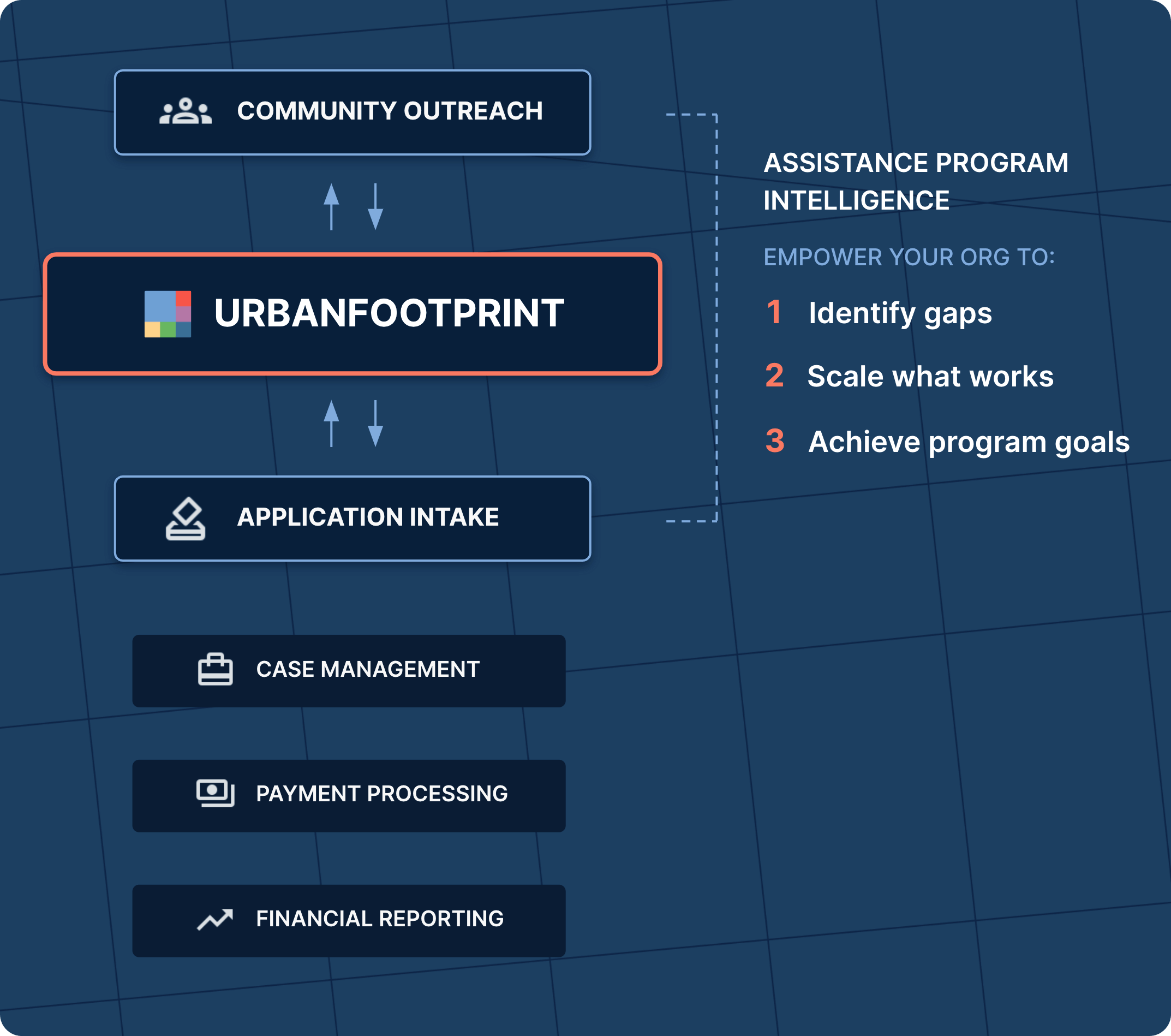
Armed with the tools in UrbanFootprint’s Assistance Program Intelligence solution, government agencies and community based organizations can also assess the need, eligibility, and enrollment progress of rental and housing fund assistance in addition to food insecurity. UrbanFootprint empowers agencies with actionable insights that lead to better decisions for communities in need.
To learn how your organization can start using UrbanFootprint, contact us at
assist-better@urbanfootprint.com.
